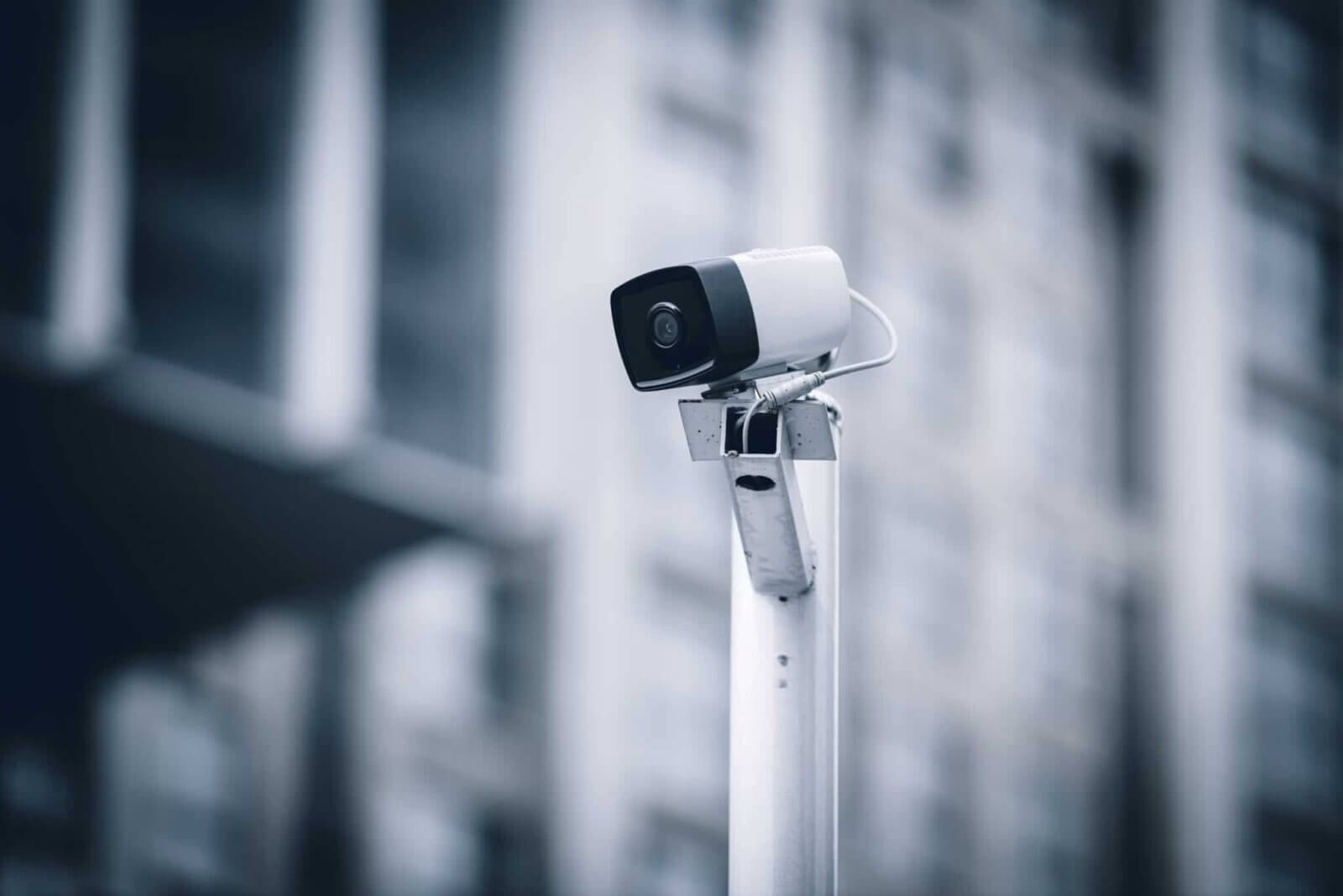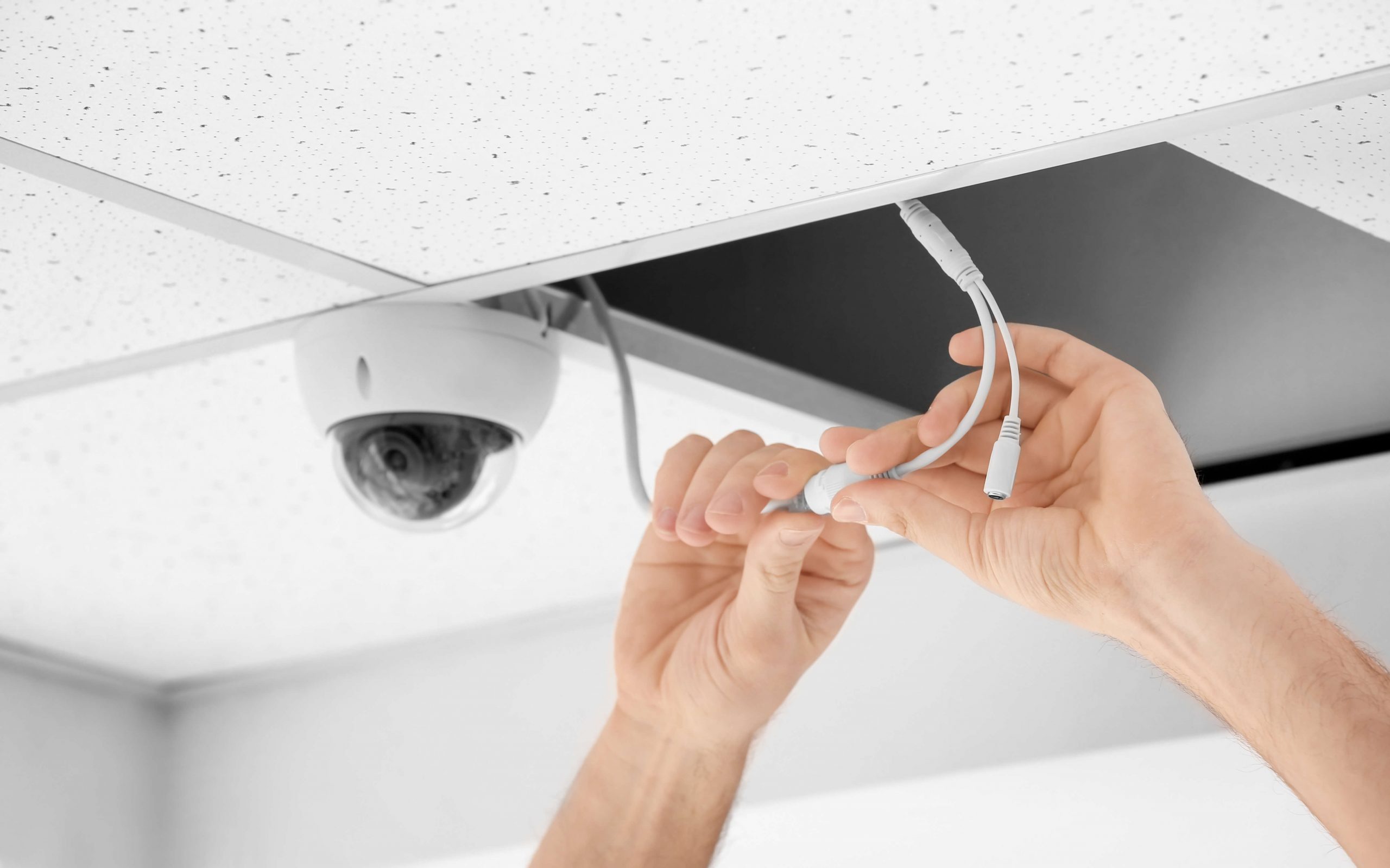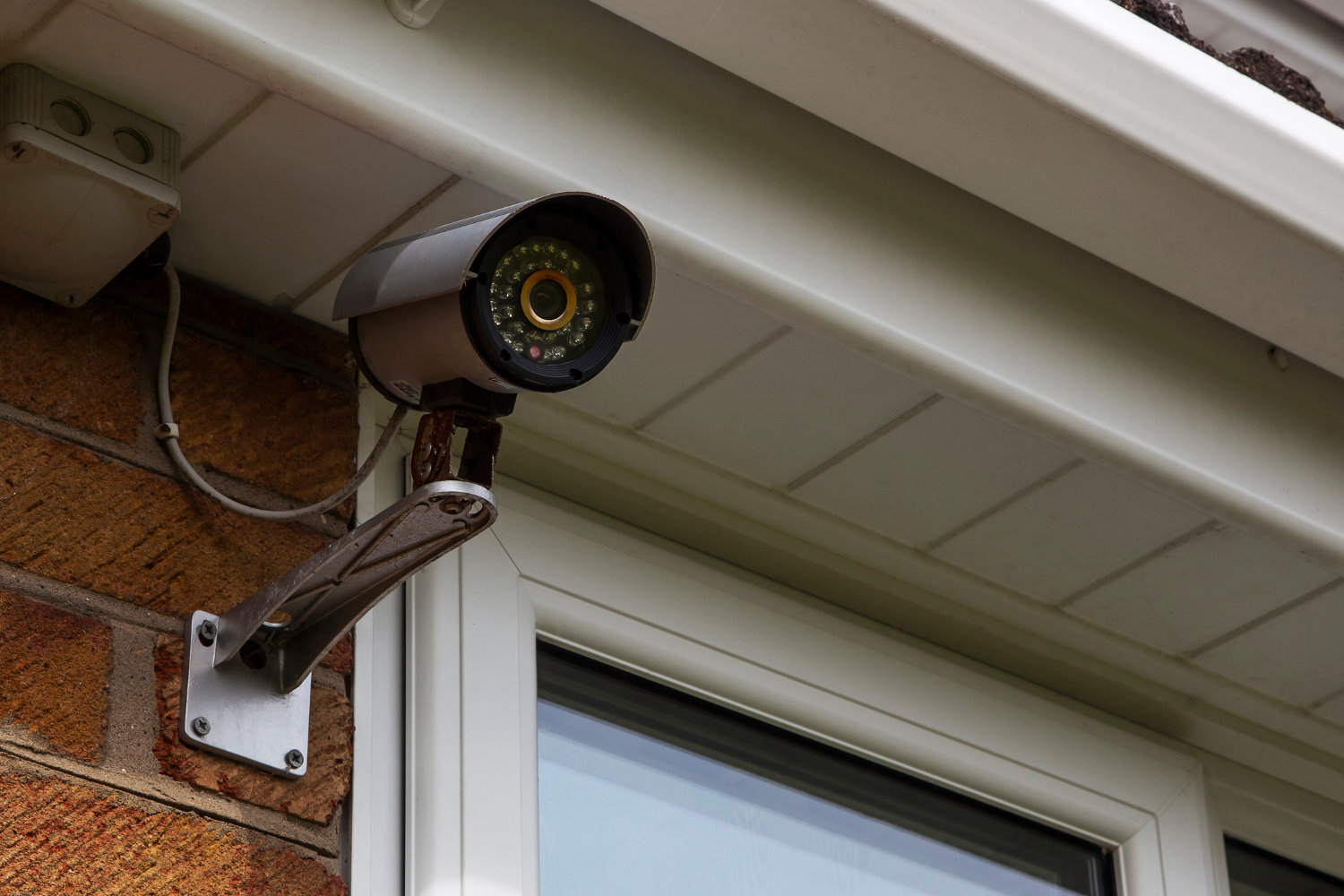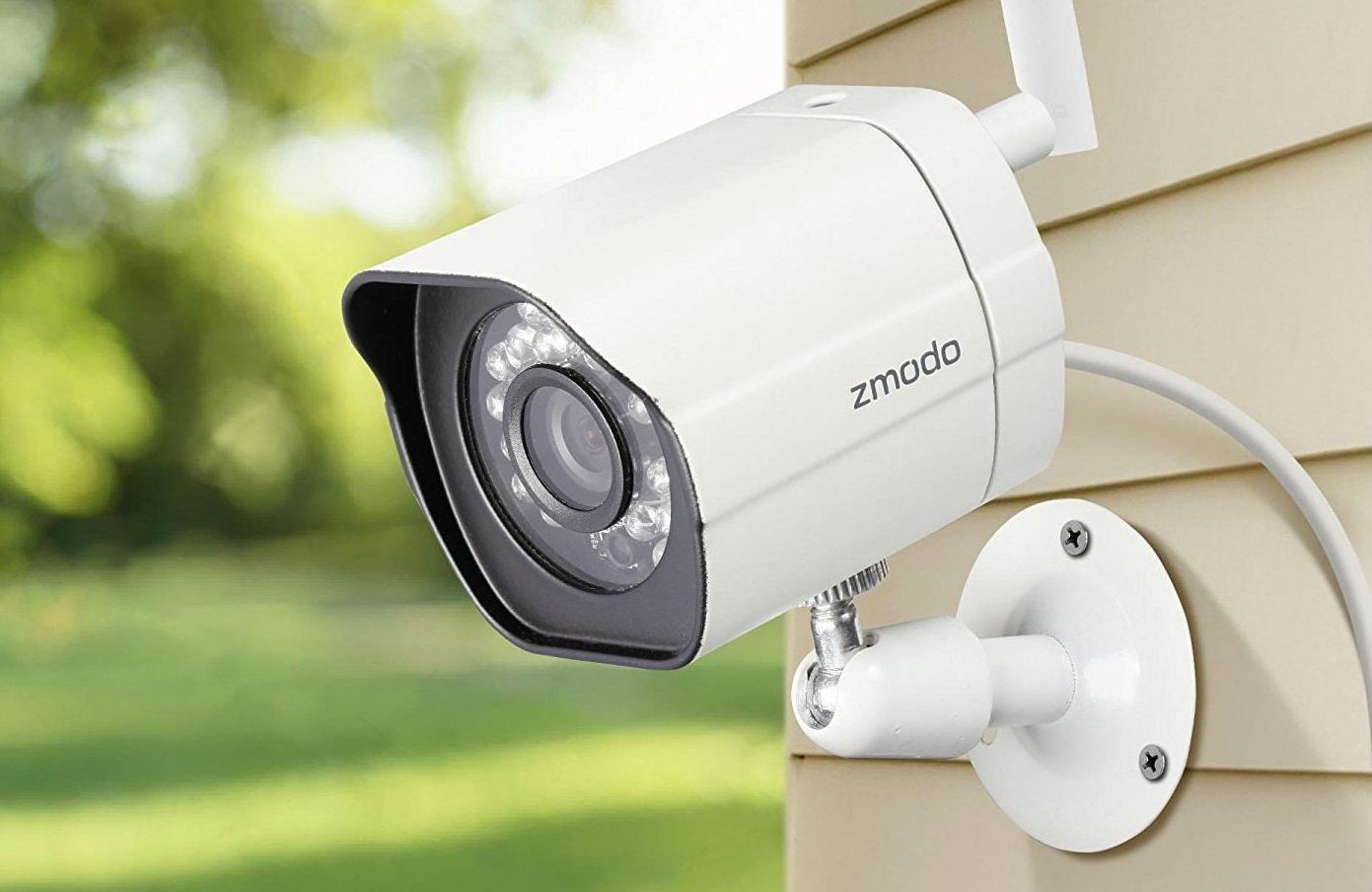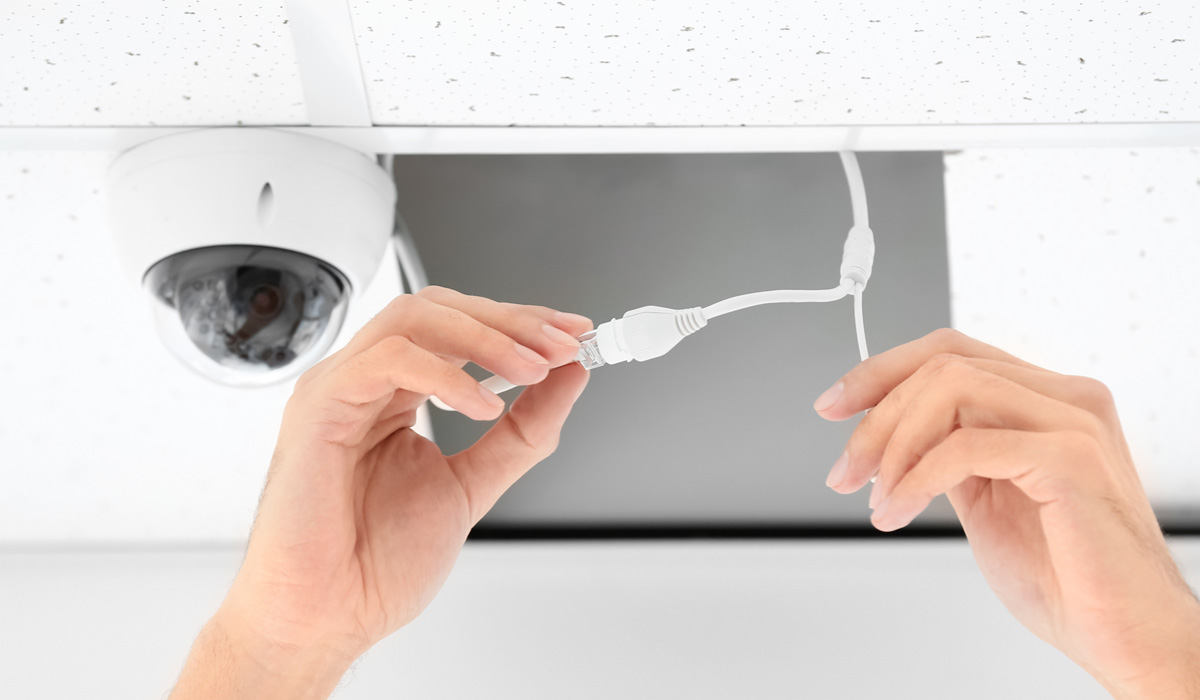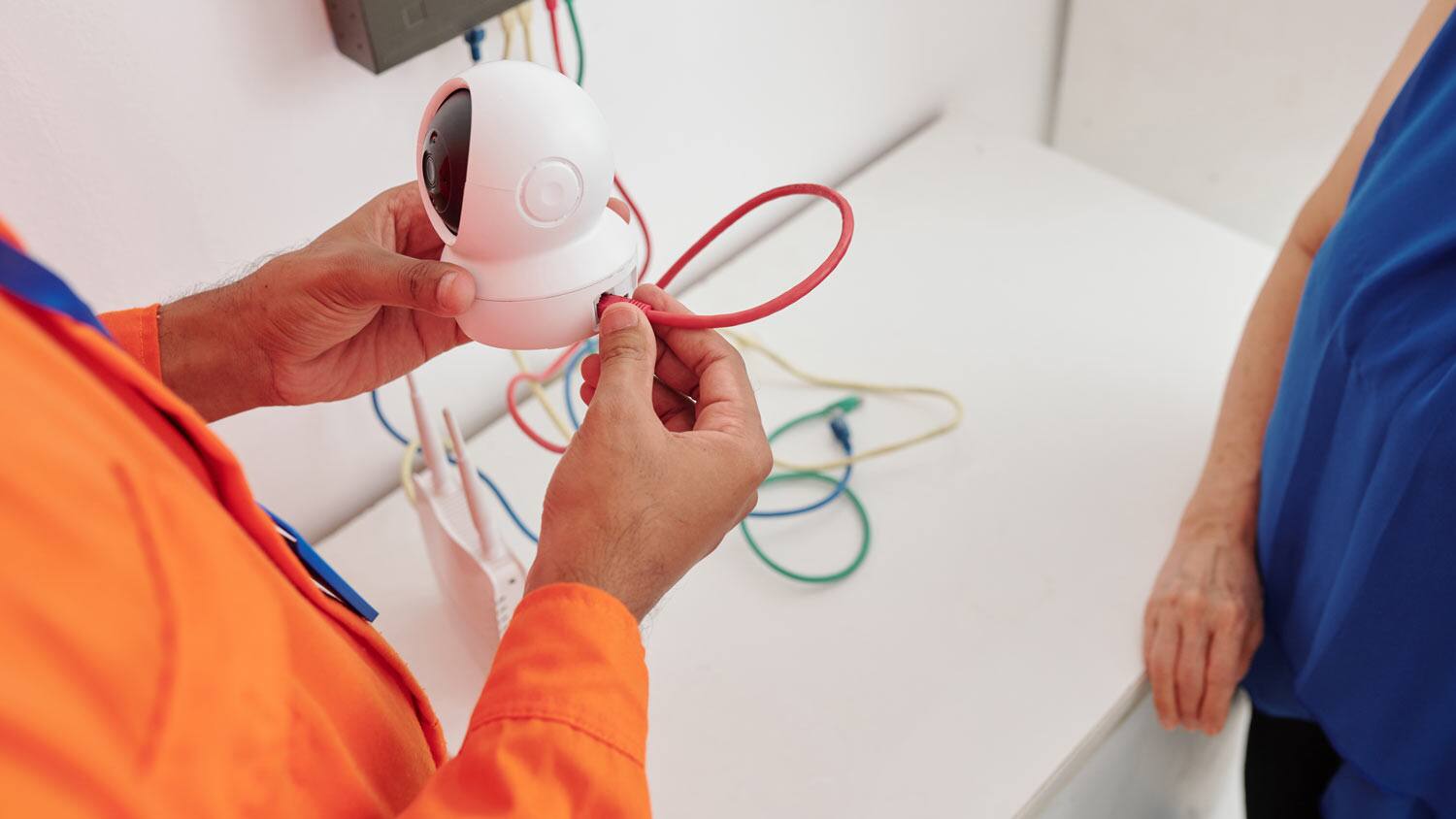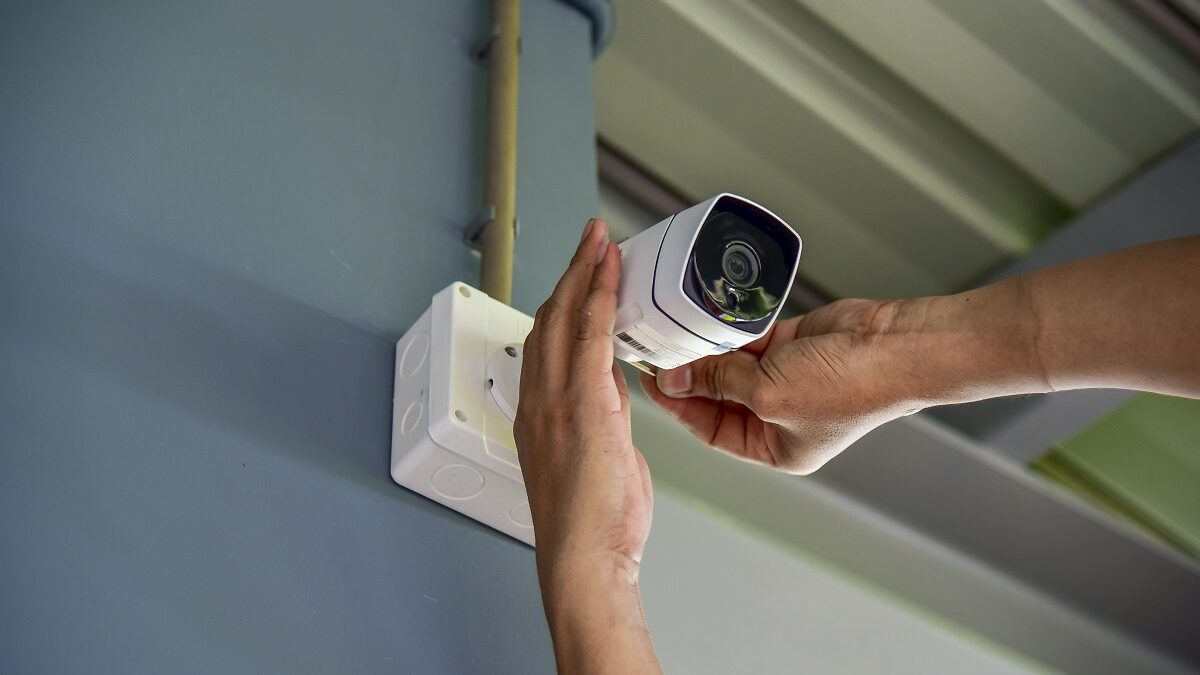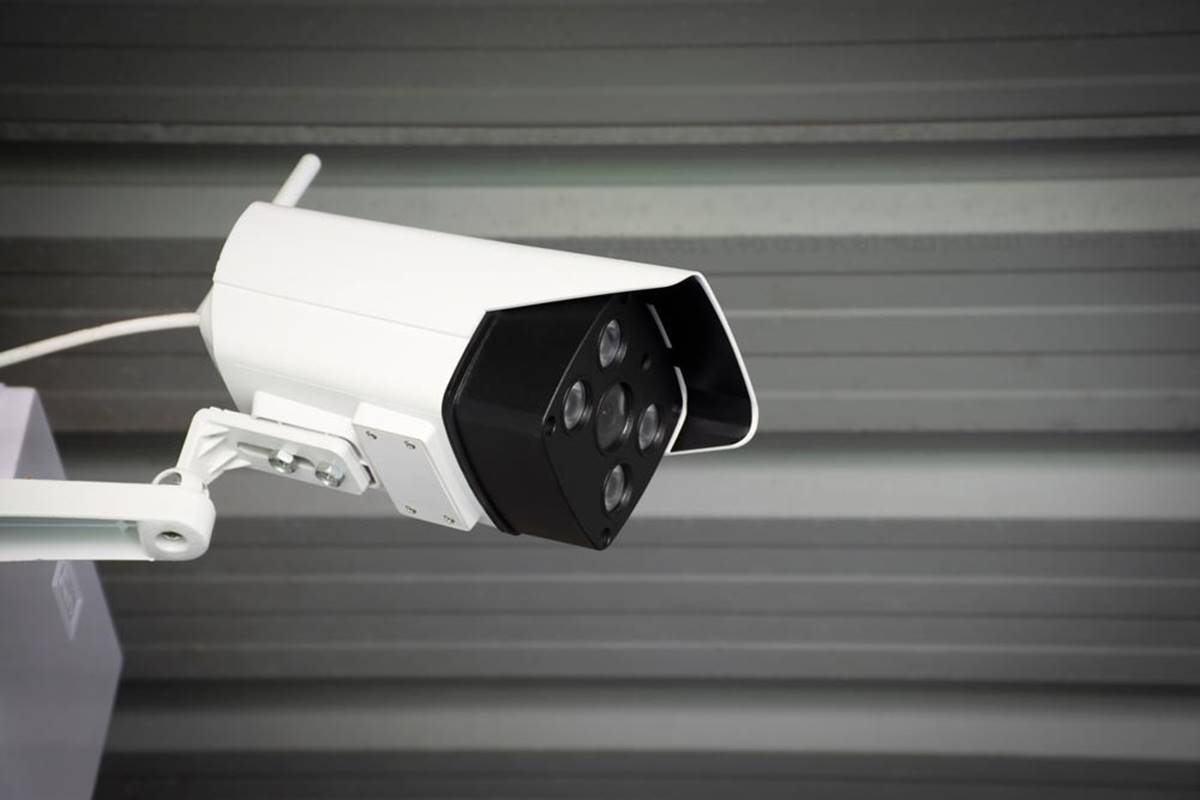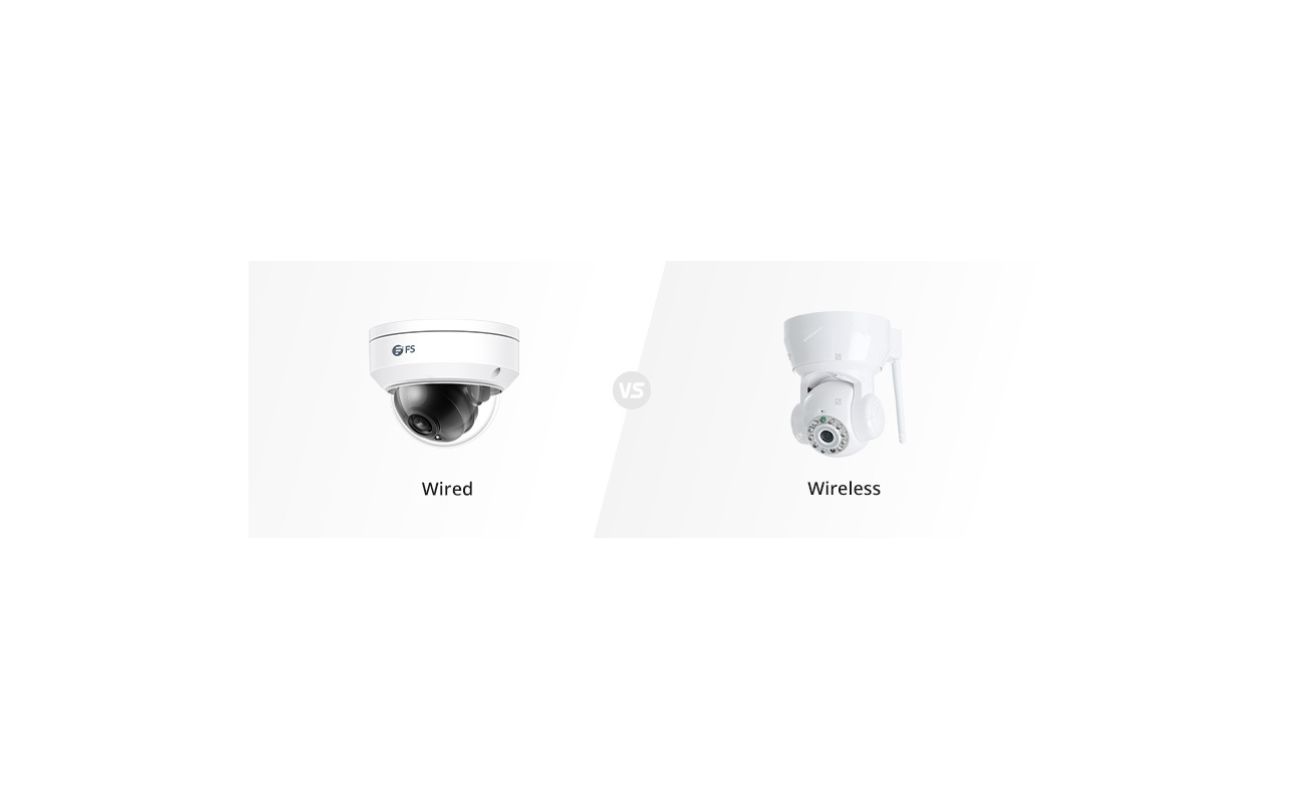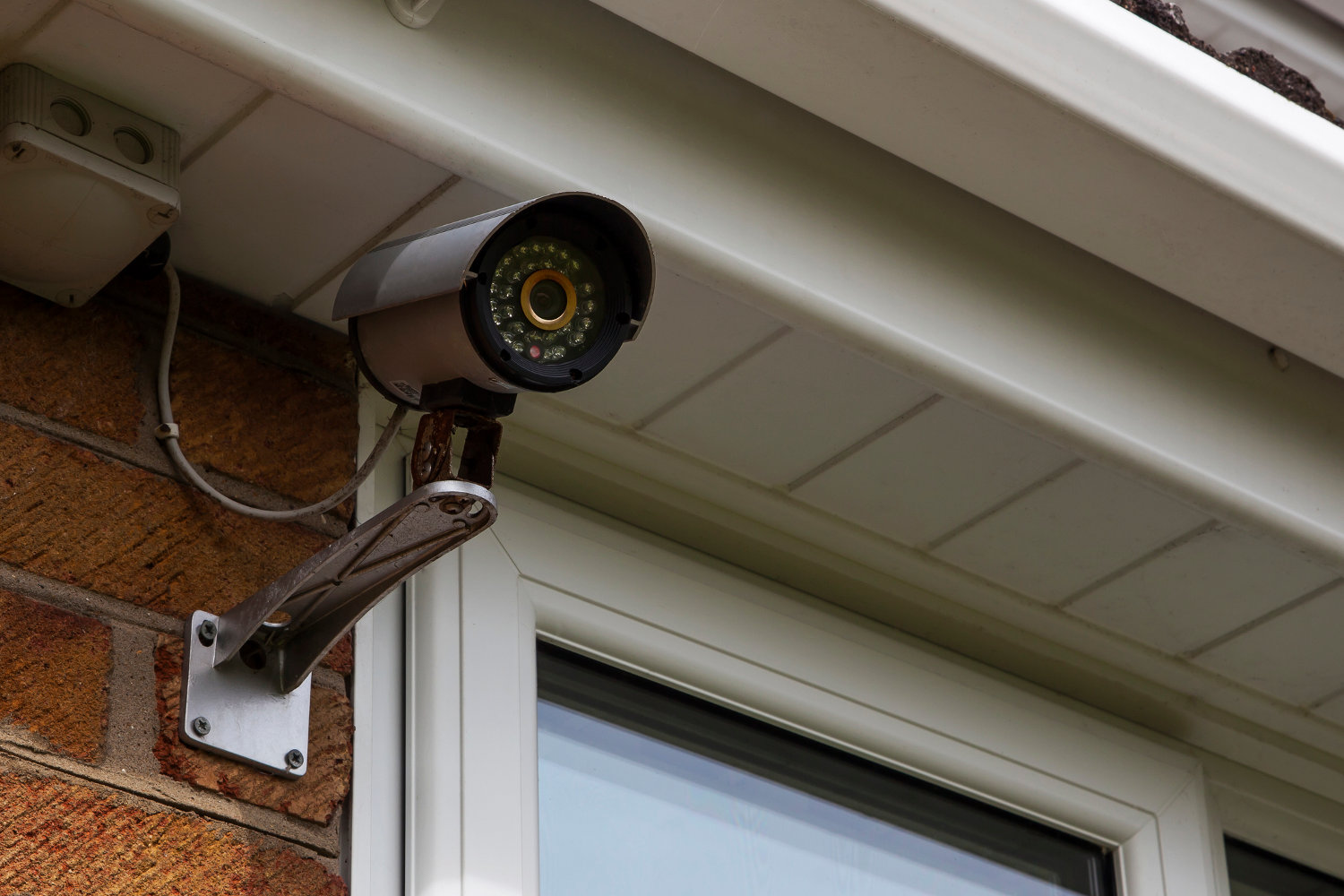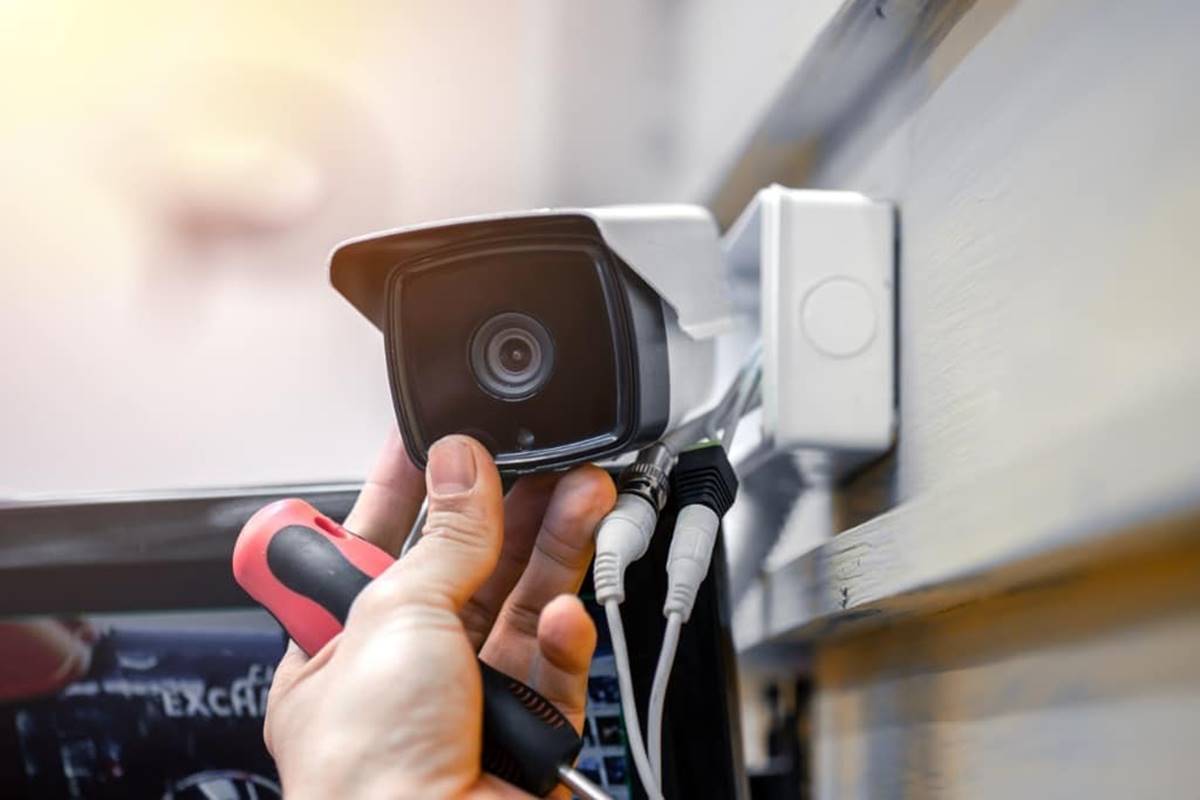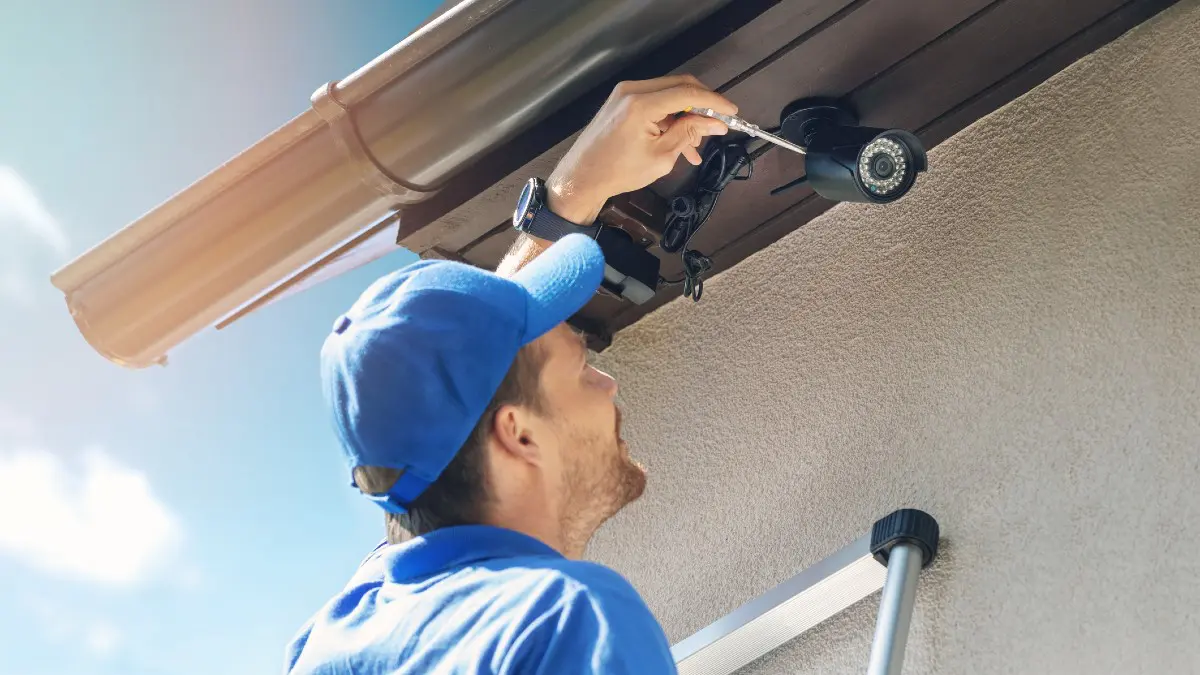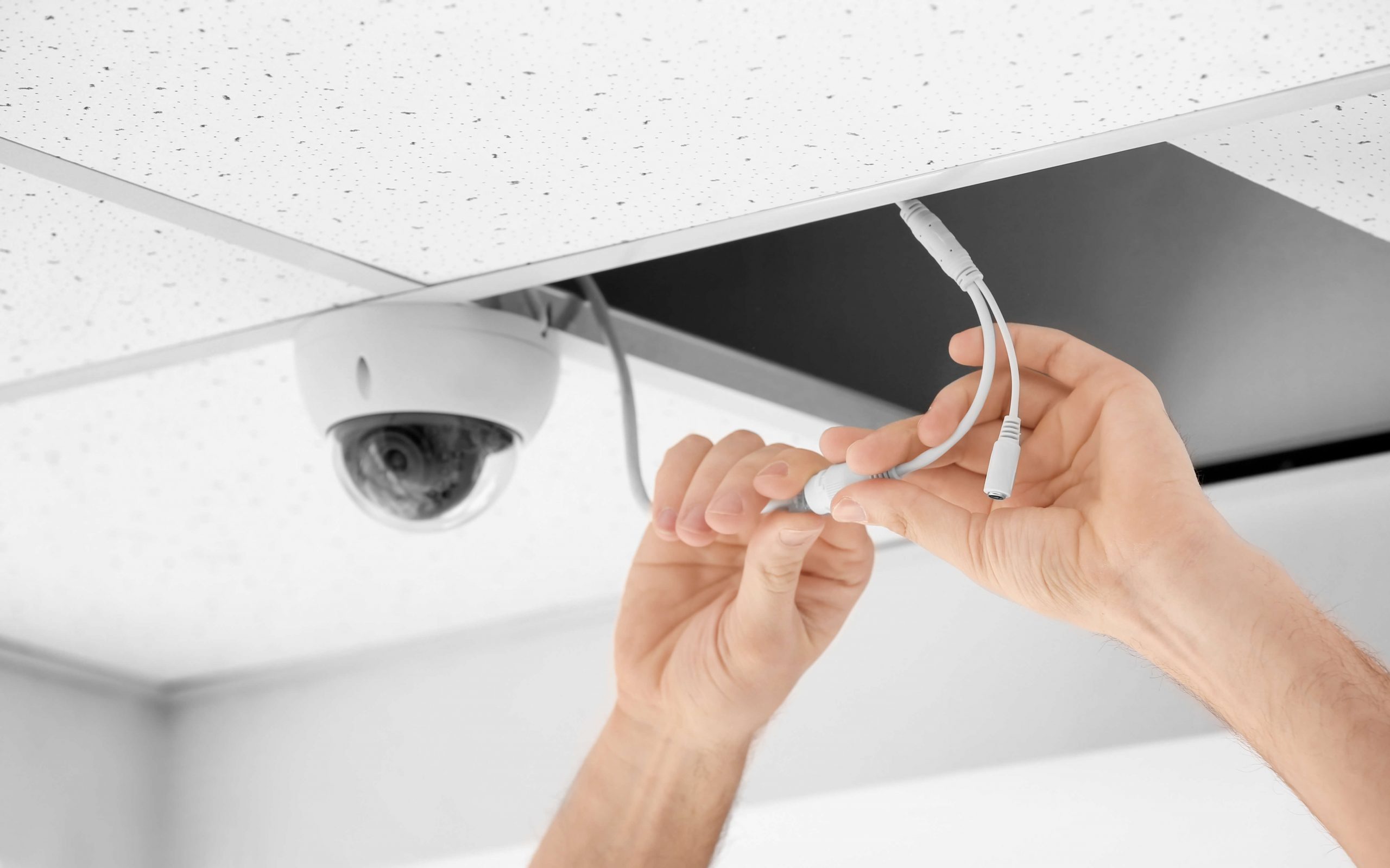Home>Home Security and Surveillance>How To Hack Into A Wired Security Camera


Home Security and Surveillance
How To Hack Into A Wired Security Camera
Modified: March 6, 2024
Learn how to hack into a wired security camera with our comprehensive guide on home security and surveillance. Keep your property safe and secure with the right tools and knowledge.
(Many of the links in this article redirect to a specific reviewed product. Your purchase of these products through affiliate links helps to generate commission for Storables.com, at no extra cost. Learn more)
Introduction
Welcome to the world of home security and surveillance! In today’s rapidly evolving digital age, protecting our homes and loved ones has become a top priority for many. And when it comes to ensuring the safety of our homes, wired security cameras have gained immense popularity. These cameras provide continuous monitoring and recording of our surroundings, giving us peace of mind.
However, as with any technology, wired security cameras are not immune to vulnerabilities. In some cases, hackers may attempt to gain unauthorized access to these cameras, potentially compromising our privacy and security. In this article, we will explore the world of hacking into wired security cameras, delving into the reasons behind such attempts and the steps you can take to protect yourself.
Before we dive into the topic of hacking into wired security cameras, let’s first understand what they are and how they work.
Key Takeaways:
- Protect your wired security cameras by updating firmware, using strong passwords, and securing your network. Stay vigilant and proactive to prevent hacking attempts and ensure the safety of your premises.
- Educate yourself and others, use reputable vendors, and implement physical security measures to safeguard your wired security cameras from potential hacking attempts. Stay informed and proactive for peace of mind.
Read more: How To Hack Into Security Cameras
Understanding Wired Security Cameras
Wired security cameras are surveillance systems that are physically connected to a network or a recording device through cables. These cameras are installed in strategic locations around a property to capture video footage and ensure constant surveillance.
Unlike wireless security cameras that transmit data wirelessly, wired cameras rely on physical cables to transmit both power and video signals. The most common types of cables used for wired security cameras are coaxial cables, Ethernet cables, and power cables. Coaxial cables are often used for transmitting video signals, while Ethernet cables enable the connection between the camera and the network. Power cables, on the other hand, provide the necessary electrical power to operate the camera.
The video captured by wired security cameras is typically stored and accessed through a Network Video Recorder (NVR) or a Digital Video Recorder (DVR). These devices are responsible for managing multiple camera feeds, recording the footage, and allowing users to view and playback the recorded videos.
Wired security cameras come in various shapes and sizes, including dome cameras, bullet cameras, and PTZ (Pan-Tilt-Zoom) cameras. Dome cameras are typically used indoors and are characterized by their dome-shaped housing, which makes it difficult to determine the direction the camera is facing. Bullet cameras, on the other hand, have a more traditional box-like design and are often used for outdoor surveillance. PTZ cameras offer the ability to remotely control the camera’s movement, allowing for flexible monitoring and zooming capabilities.
Now that we have a basic understanding of wired security cameras, let’s explore some of the reasons why hackers may attempt to gain unauthorized access to these surveillance systems.
Reasons for Hacking into Wired Security Cameras
There are several motives behind hacking into wired security cameras, ranging from personal curiosity to malicious intent. Understanding these reasons can help us better protect our cameras and prevent potential intrusions. Here are some common motivations for hacking into wired security cameras:
- Privacy invasion: In some cases, hackers may attempt to gain unauthorized access to wired security cameras to invade people’s privacy. They may exploit vulnerabilities in the camera system to secretly monitor private spaces, such as homes, offices, or even public areas.
- Information gathering: Wired security cameras often provide valuable information about a property’s layout, routines, or even security measures in place. Hackers may target these cameras to gather intelligence for various purposes, such as planning a burglary or conducting surveillance on a specific individual or organization.
- Identity theft and fraud: By hacking into wired security cameras, cybercriminals can gain access to personal information, including credit card details, addresses, or passwords. This information can be used for identity theft, fraud, or other malicious activities.
- Extortion and blackmail: Hackers may infiltrate wired security cameras to obtain compromising or sensitive footage that can be used to blackmail individuals or organizations for financial gain.
- Disruption and sabotage: Some hackers aim to disrupt or sabotage the operations of individuals or businesses by gaining control of their security cameras. They may manipulate the camera settings, disable the recordings, or distort the video feed, causing confusion or even hindering the ability to identify potential threats.
- Revenge or harassment: Individuals with personal grudges or conflicts may hack into wired security cameras to harass or spy on their targets, invading their privacy and causing emotional distress.
It is crucial to recognize these motivations and take proactive measures to protect your wired security cameras from potential hacking attempts. In the next sections, we will explore the vulnerability assessment process and steps you can take to prevent hacking attempts.
Assessing the Vulnerability of Wired Security Cameras
Before we can effectively protect our wired security cameras from hacking attempts, it’s essential to assess their vulnerability. By identifying and understanding potential weaknesses in the camera system, we can implement targeted security measures to mitigate the risk. Here are some key aspects to consider when assessing the vulnerability of wired security cameras:
- Firmware updates: Keep the camera’s firmware up to date. Manufacturers often release firmware updates to address security vulnerabilities and improve overall system stability. Regularly check for updates and install them promptly.
- Password strength: Use strong, unique passwords for your camera’s login credentials. Avoid common passwords or easily guessable combinations. Include a mix of uppercase and lowercase letters, numbers, and special characters.
- Default settings: Change default settings such as usernames, passwords, and device names. Hackers often target cameras with default settings, as they are widely known and easily exploitable.
- Network security: Ensure that your network is secure by enabling a strong encryption method (such as WPA2) on your Wi-Fi router. Use a unique network name (SSID) and a strong password for your wireless network.
- Physical security: Protect the physical access to your cameras by placing them in secure locations and using tamper-proof mounting hardware. This prevents hackers from physically manipulating the cameras or removing them.
- Vendor reputation: Research and choose reputable vendors when purchasing wired security cameras. Look for companies with a strong track record of security and regular software updates.
- Network segmentation: Consider segregating your camera network from your main network. This prevents potential attackers from gaining access to other devices or sensitive data if they manage to compromise the camera system.
- Regular monitoring: Keep an eye on your camera system’s logs and monitor any suspicious activity. Enable alerts and notifications for unauthorized logins, changes in camera settings, or unusual network traffic.
- Professional assistance: If you’re unsure about assessing the security of your wired security cameras, consider seeking professional assistance from a cybersecurity expert. They can perform a thorough assessment and provide recommendations based on your specific setup.
By considering these factors and taking appropriate security measures, you can significantly reduce the vulnerability of your wired security cameras and enhance their protection against hacking attempts. In the next section, we will explore how hackers gather information about their target camera systems and potential ways to prevent such attempts.
Gathering Information about the Target Camera System
Before attempting to hack into a wired security camera, hackers need to gather information about the target system. By understanding the camera’s configuration, network setup, and potential vulnerabilities, hackers can plan their attack more effectively. Here are some common ways they gather information about the target camera system:
- Network scanning: Hackers may perform network scanning to identify IP addresses associated with security cameras. They can use tools like Nmap or Shodan to discover active cameras on the network.
- Internet search: Publicly accessible cameras or cameras with weak security measures may be indexed by search engines. Hackers can use specific search queries to find vulnerable cameras that are connected to the internet.
- Default credentials: Some camera models come with default usernames and passwords that are widely known. Hackers can simply try these default credentials to gain unauthorized access if the camera owner has not changed them.
- Network packet inspection: By examining network traffic, hackers can gather information about the camera’s communication protocols, ports used, and potential vulnerabilities. They can intercept packets to extract valuable data or identify weak points in the camera system.
- Social engineering: Hackers may engage in social engineering tactics, such as posing as technical support or using phishing techniques, to obtain login credentials or other sensitive information from camera owners.
- Brute-force attacks: In some cases, hackers may attempt to brute-force their way into a camera system by systematically trying different combinations of usernames and passwords until they find the correct credentials.
- Exploit databases: Hackers can search through public vulnerability databases or forums to find known vulnerabilities in specific camera models or their associated software. If the camera owner has not patched these vulnerabilities, the system becomes an easy target.
To protect your camera system from information gathering attempts, there are several preventive measures you can take:
- Change default credentials: Always change the default usernames and passwords of your cameras to unique and strong alternatives.
- Keep cameras offline: If possible, keep your cameras on a separate, private network that is isolated from the internet. This significantly reduces the chances of them being discovered and targeted by hackers.
- Regular firmware updates: Stay up to date with the latest firmware released by the camera manufacturer. Apply updates promptly to patch any known vulnerabilities.
- Disable unnecessary features: Disable any unused or unnecessary features on your camera system to minimize potential attack vectors.
- Implement network security measures: Use firewalls, intrusion detection systems, and network segmentation to protect your camera system from unauthorized access.
- Be cautious with sharing camera footage: Avoid publicly sharing camera footage or granting unrestricted access to your camera system. Limit access to trusted individuals or utilize secure methods for remote viewing.
By being proactive and implementing these measures, you can reduce the chances of hackers gathering critical information about your wired security camera system. In the next section, we will explore how hackers exploit vulnerabilities to gain unauthorized access.
Read more: How To Hack Home Security Cameras
Exploiting Vulnerabilities in Wired Security Cameras
Once hackers have gathered information about the target camera system, they can begin to exploit vulnerabilities to gain unauthorized access. By exploiting these weaknesses, they can control the camera, tamper with settings, or even intercept the video feed. Here are some common vulnerabilities that hackers may exploit in wired security cameras:
- Weak encryption: If the camera system uses weak or outdated encryption protocols, hackers can intercept and decode the video feed or gain unauthorized access to the camera’s settings.
- Outdated firmware: Older firmware versions may contain known vulnerabilities that hackers can exploit. If the camera owner hasn’t updated the firmware, the system becomes an easy target.
- Default credentials: Many camera models come with default usernames and passwords that are widely known. If the camera owner does not change these default credentials, hackers can easily gain access to the camera system.
- Remote access vulnerabilities: Some camera systems allow remote access for convenience, but if not properly secured, hackers can exploit these remote access features to gain control of the camera.
- Unsecured network: If the camera is connected to an unsecured network, hackers can intercept network traffic, gain unauthorized access to the camera, or even infiltrate other devices on the network.
- Unpatched vulnerabilities: Hackers look for unpatched vulnerabilities in camera firmware or associated software. If the camera owner fails to apply necessary updates, the system remains exposed to potential attacks.
- Physical tampering: In some cases, hackers may physically tamper with the camera system, such as cutting cables, disabling power, or deliberately damaging the camera’s components to disrupt its functionality.
To prevent hackers from exploiting vulnerabilities in your wired security camera system, it is important to take the following precautions:
- Regularly update firmware: Keep your camera’s firmware up to date by installing the latest patches and security updates released by the manufacturer.
- Change default credentials: Always change the default usernames and passwords of your cameras to strong, unique alternatives.
- Enable encryption: Use encryption protocols such as WPA2 for securing your camera system’s network traffic. This helps prevent unauthorized access and interception of data.
- Implement strong access controls: Enable multi-factor authentication and restrict access to the camera system to authorized individuals only.
- Network segmentation: Consider segregating your camera network from other devices on your network to minimize the potential impact of a breach.
- Physically protect the cameras: Ensure that the cameras are securely mounted and protected from tampering or physical damage.
- Regularly monitor for unauthorized activity: Keep an eye on camera logs and network traffic to detect any suspicious behavior or unauthorized access attempts.
By being proactive in addressing vulnerabilities and implementing strong security measures, you can significantly reduce the risk of hackers exploiting weaknesses in your wired security camera system. In the next section, we will explore how hackers can access the video feed of a compromised camera system and ways to prevent such unauthorized access.
Accessing the Camera’s Video Feed
Once hackers have successfully gained unauthorized access to a wired security camera, they can access the camera’s video feed and potentially monitor the captured footage. This unauthorized access can pose serious privacy and security concerns. Here are some methods hackers may employ to access the camera’s video feed:
- Intercepting network traffic: If the camera’s video feed is transmitted over an unencrypted network or using weak encryption protocols, hackers can intercept the network traffic and capture the video feed data.
- Exploiting remote access: Hackers can exploit vulnerabilities in the camera’s remote access features to gain control and access the live video feed remotely from any location.
- Compromising the video storage: Some camera systems store video footage locally on a device like a Network Video Recorder (NVR) or Digital Video Recorder (DVR). If hackers gain access to these storage devices, they can extract and view the recorded video footage.
- Manipulating camera settings: Once hackers gain control of the camera system, they can manipulate the camera’s settings or disable the video feed altogether to hide their unauthorized access.
- Using backdoor access: In some cases, manufacturers may inadvertently leave backdoor access points in camera firmware or associated software. Hackers can exploit these backdoors to gain direct access to the camera’s video feed.
- Utilizing compromised credentials: If hackers obtain the login credentials of the camera system, they can log in and access the video feed as if they were legitimate users.
To prevent unauthorized access to your camera’s video feed, it is crucial to implement the following security measures:
- Enable encryption: Make sure your camera system’s video feed is transmitted over an encrypted network, using secure protocols such as HTTPS or RTSPS. This prevents hackers from intercepting the video feed.
- Secure remote access: If remote access is necessary, employ strong authentication methods such as two-factor authentication (2FA) and use a virtual private network (VPN) to establish a secure connection.
- Regularly monitor for unauthorized access: Keep an eye on the camera system’s logs and network traffic to detect any suspicious activity or unauthorized logins.
- Segment your network: Separate your camera network from other devices on your network to minimize the potential impact of a breach.
- Change default credentials: Always change the default usernames and passwords of your cameras to strong, unique alternatives.
- Implement strong access controls: Restrict access to the camera system to authorized individuals only. Regularly review and update user access permissions.
- Physically protect the cameras and recording devices: Ensure that the cameras and storage devices are physically secure and protected from unauthorized access.
By following these preventive measures, you can greatly reduce the risk of unauthorized access to your camera system’s video feed and uphold the privacy and security of your premises. In the next section, we will explore ways to prevent hacking attempts on wired security cameras altogether.
Manipulating the Camera’s Settings
Once hackers gain unauthorized access to a wired security camera, they can manipulate the camera’s settings to their advantage. By doing so, they can further compromise the security and privacy of the camera system. Here are some ways hackers may manipulate the camera’s settings:
- Disabling or altering the recording: Hackers can disable the camera’s recording functionality or alter the settings to record selectively, allowing them to avoid detection.
- Changing camera angles: If the camera supports movement or has PTZ (Pan-Tilt-Zoom) functionality, hackers can control the camera to change angles, zoom in on specific areas, or pivot away from important areas to avoid detection or capture.
- Enabling unauthorized access: Hackers can modify the camera’s access controls and permissions, allowing them to grant themselves or others unauthorized access to the camera system.
- Manipulating motion detection settings: By altering the camera’s motion detection settings, hackers can bypass or manipulate the alarms or notifications triggered by movement in front of the camera, giving them an advantage in remaining undetected.
- Changing camera configurations: Hackers may adjust camera configurations, such as exposure settings, video quality, or frame rate, to manipulate the video feed and make it difficult to identify potential threats or incidents.
To prevent hackers from manipulating the settings of your wired security camera, consider implementing the following security measures:
- Regularly monitor camera settings: Continuously check your camera’s settings for any unauthorized changes. Review the settings periodically to ensure they align with your desired configurations.
- Enable motion detection alerts: Configure the camera’s motion detection settings and enable alerts or notifications to be promptly notified of any suspicious movement in the camera’s view.
- Change default passwords: Always change the default usernames and passwords of your cameras to strong, unique alternatives. This helps prevent hackers from accessing and manipulating camera settings.
- Limit administrative access: Restrict administrative access to the camera’s settings to trusted individuals only. Regularly review and update user access permissions.
- Update firmware: Keep your camera’s firmware up to date with the latest patches and security updates to ensure any identified vulnerabilities are resolved.
- Physically secure the cameras: Ensure that the cameras are physically protected and located in secure areas to prevent them from being tampered with or accessed by unauthorized individuals.
- Regularly review video footage: Periodically review the recorded video footage to identify any unusual activities or signs of tampering. This allows you to take appropriate action if any unauthorized changes have been made.
By implementing these preventive measures, you can significantly reduce the risk of hackers manipulating the settings of your wired security camera system and maintain control over your surveillance environment. In the next section, we will discuss additional steps to prevent hacking attempts on wired security cameras altogether.
Preventing Hacking Attempts on Wired Security Cameras
Preventing hacking attempts on wired security cameras requires a comprehensive approach that combines various security measures. By proactively implementing these preventive measures, you can significantly reduce the risk of unauthorized access and protect the privacy and security of your premises. Here are some essential steps to prevent hacking attempts:
- Keep firmware up to date: Regularly update your camera’s firmware to ensure that any identified vulnerabilities are patched. Check the manufacturer’s website for updates and install them promptly.
- Change default credentials: Immediately change the default usernames and passwords on your cameras to strong, unique alternatives. Avoid using common or easily guessable passwords.
- Secure your network: Use a strong encryption method (e.g., WPA2) on your Wi-Fi router and set a unique network name (SSID) along with a strong password. Regularly review and update your wireless network security settings.
- Enable encryption: Configure your camera system to transmit data using encrypted protocols such as HTTPS or RTSPS. This helps protect your video feed from unauthorized interception.
- Implement network segmentation: Consider setting up separate VLANs (Virtual LANs) for your camera system and other devices on your network. This helps prevent unauthorized access to other devices if the camera system is compromised.
- Restrict remote access: If remote access is necessary, use a virtual private network (VPN) to establish a secure connection. Enable strong authentication methods such as two-factor authentication (2FA) to protect against unauthorized remote access.
- Regularly monitor for suspicious activity: Keep an eye on your camera system’s logs and network traffic to detect any unusual or unauthorized access attempts. Enable alerts or notifications for any suspicious activity.
- Use reputable vendors: Purchase your wired security cameras from reputable vendors with a proven track record of security. Research the product and manufacturer’s reputation before making a purchase.
- Physically protect the cameras: Install your cameras in secure locations and use tamper-proof mounts to prevent physical tampering or damage.
- Educate yourself and your users: Stay informed about the latest hacking techniques and security best practices. Train yourself and others who have access to the camera system on how to identify and prevent hacking attempts.
- Regularly review and update security measures: Stay proactive by reviewing your camera system’s security measures regularly. Update and adjust them as needed to address emerging threats and vulnerabilities.
By following these preventive measures, you can enhance the security of your wired security cameras and thwart hacking attempts. It is important to stay vigilant and proactive in maintaining the security of your camera system. Remember, securing your cameras goes hand in hand with protecting the privacy and security of your premises. Stay informed, take the necessary security measures, and ensure the peace of mind that comes with a well-protected surveillance system.
I hope this article has provided you with valuable insights and guidance on preventing hacking attempts on wired security cameras. Stay safe and secure!
Conclusion
As technology continues to advance, it is crucial to be aware of the potential vulnerabilities in our wired security camera systems and take proactive steps to prevent hacking attempts. By understanding the functionalities of wired security cameras, the motives behind hacking attempts, and the methods hackers use to gain unauthorized access, we can better protect our privacy and security.
Assessing the vulnerability of our camera systems, gathering information about potential weaknesses, and implementing preventive measures are essential to maintain the integrity of our surveillance infrastructure.
Regularly updating firmware, changing default credentials, securing our networks with encryption, enabling strong access controls, and monitoring for suspicious activities are just a few examples of the steps we can take to protect ourselves.
Additionally, physical security measures and educating users about the risks and best practices will further strengthen our defenses against hacking attempts.
By being proactive and diligent in our approach to securing our wired security cameras, we can have peace of mind knowing our homes and loved ones are well-protected.
Remember, preventive measures are a continuous process. Stay informed about emerging threats, keep up with security updates, and regularly review your camera system’s security measures to ensure ongoing protection.
Together, we can maintain the privacy, security, and peace of mind that wired security cameras are designed to provide.
Frequently Asked Questions about How To Hack Into A Wired Security Camera
Was this page helpful?
At Storables.com, we guarantee accurate and reliable information. Our content, validated by Expert Board Contributors, is crafted following stringent Editorial Policies. We're committed to providing you with well-researched, expert-backed insights for all your informational needs.
